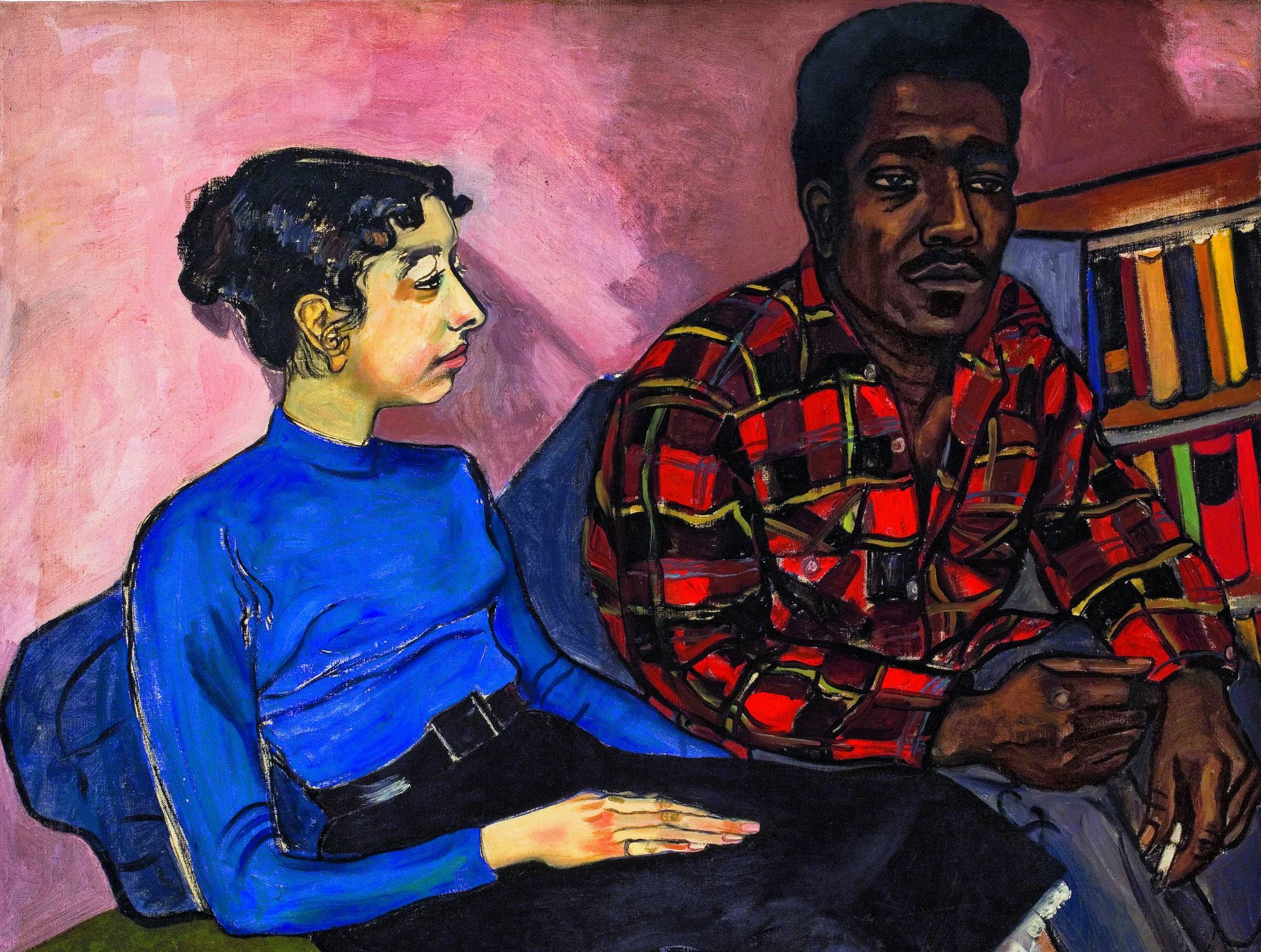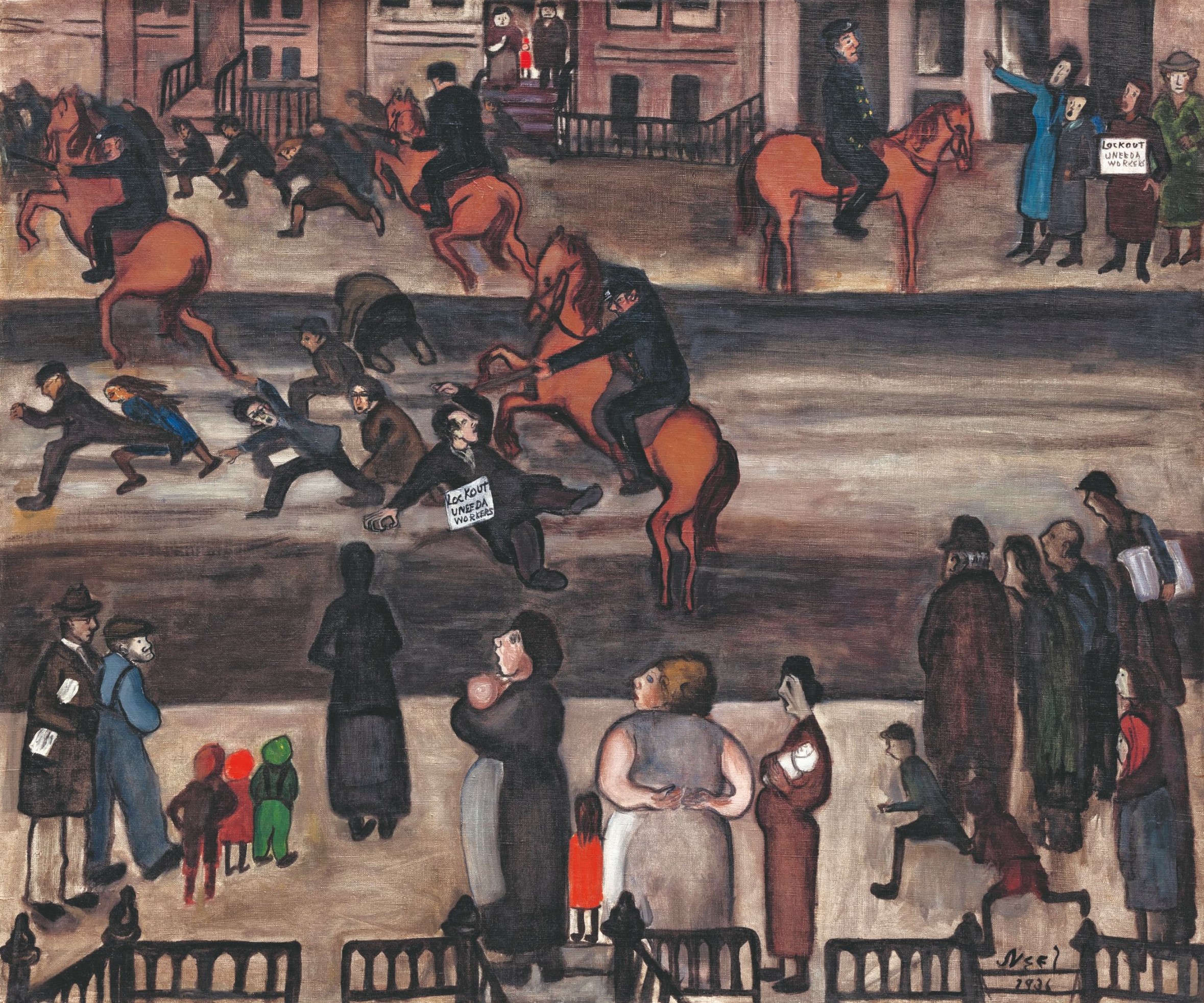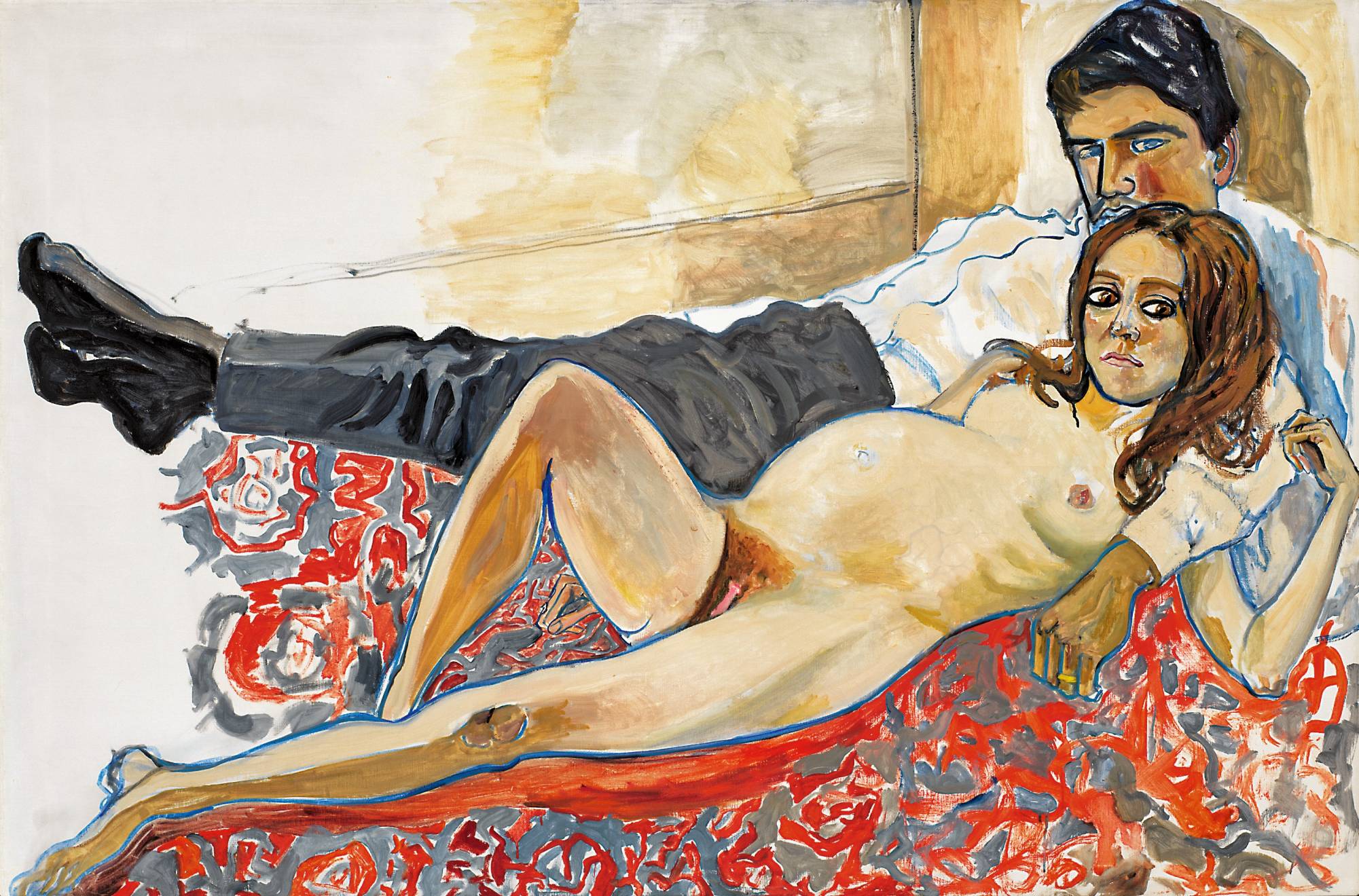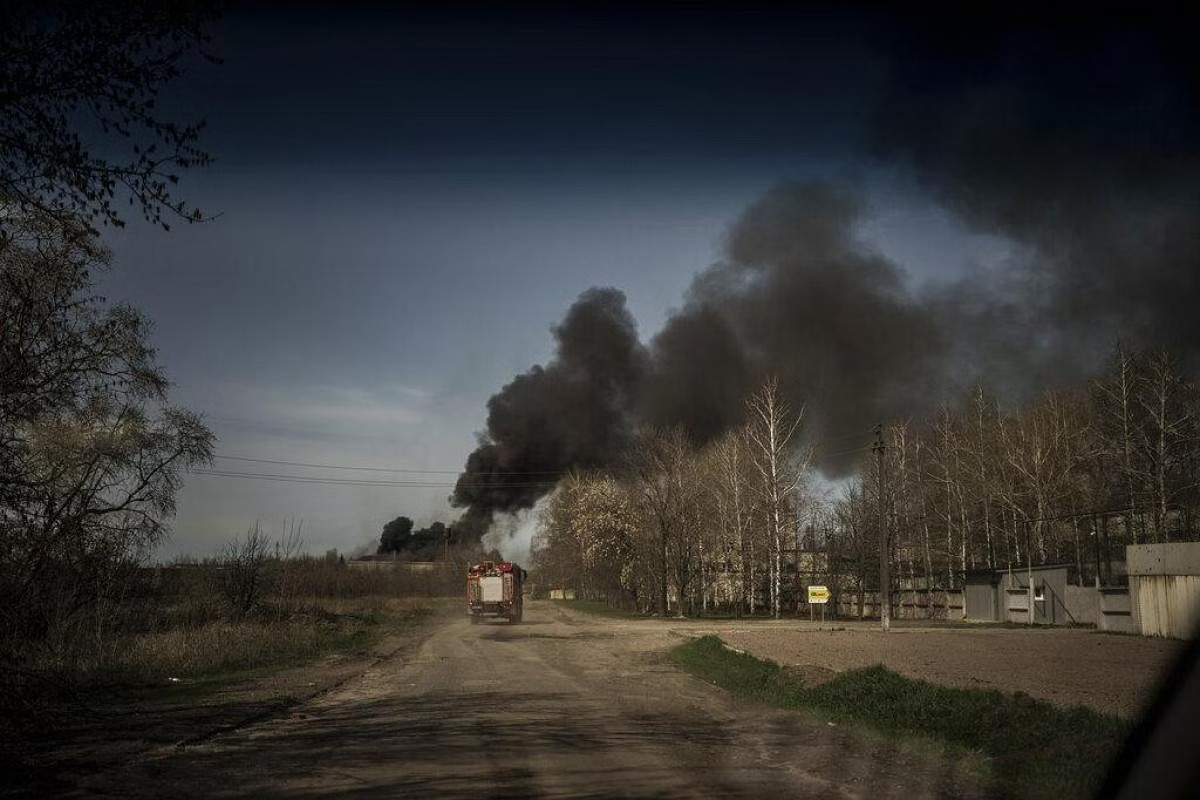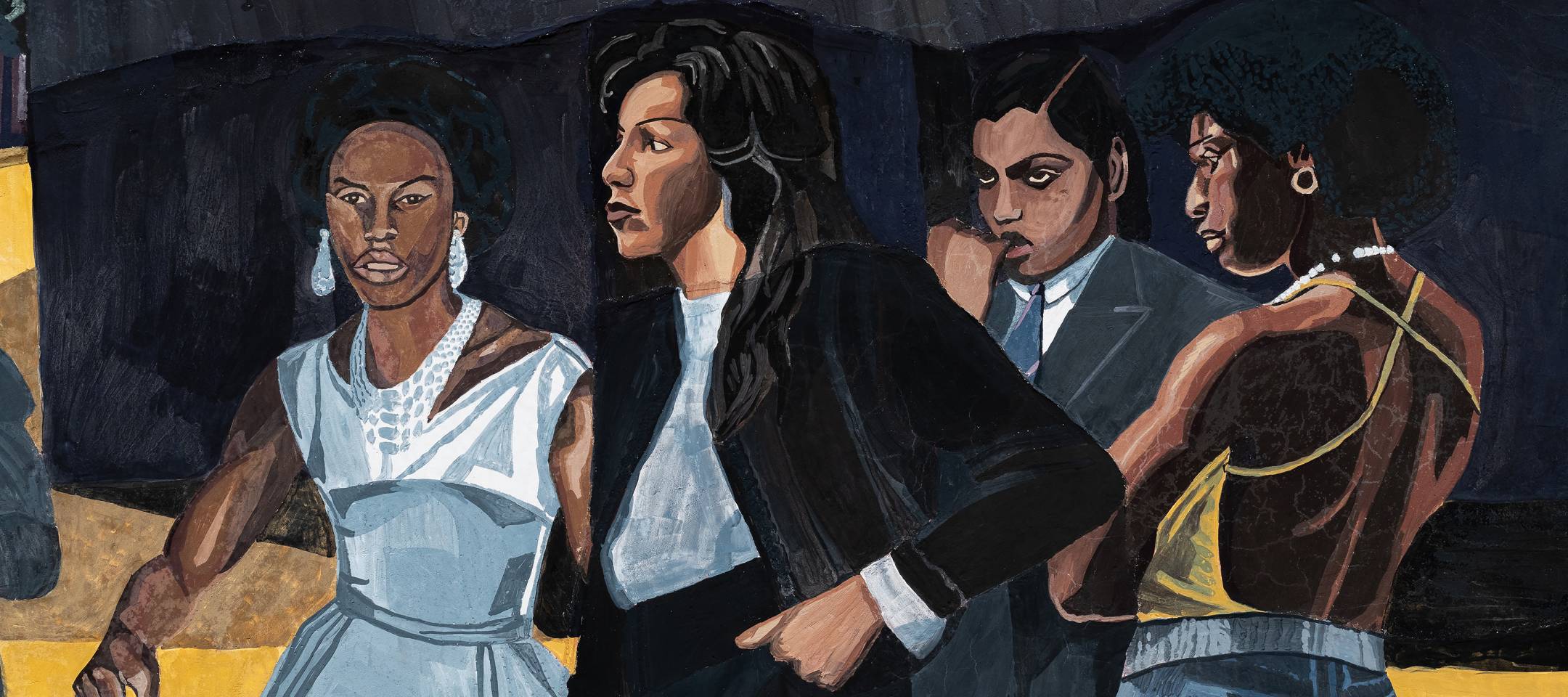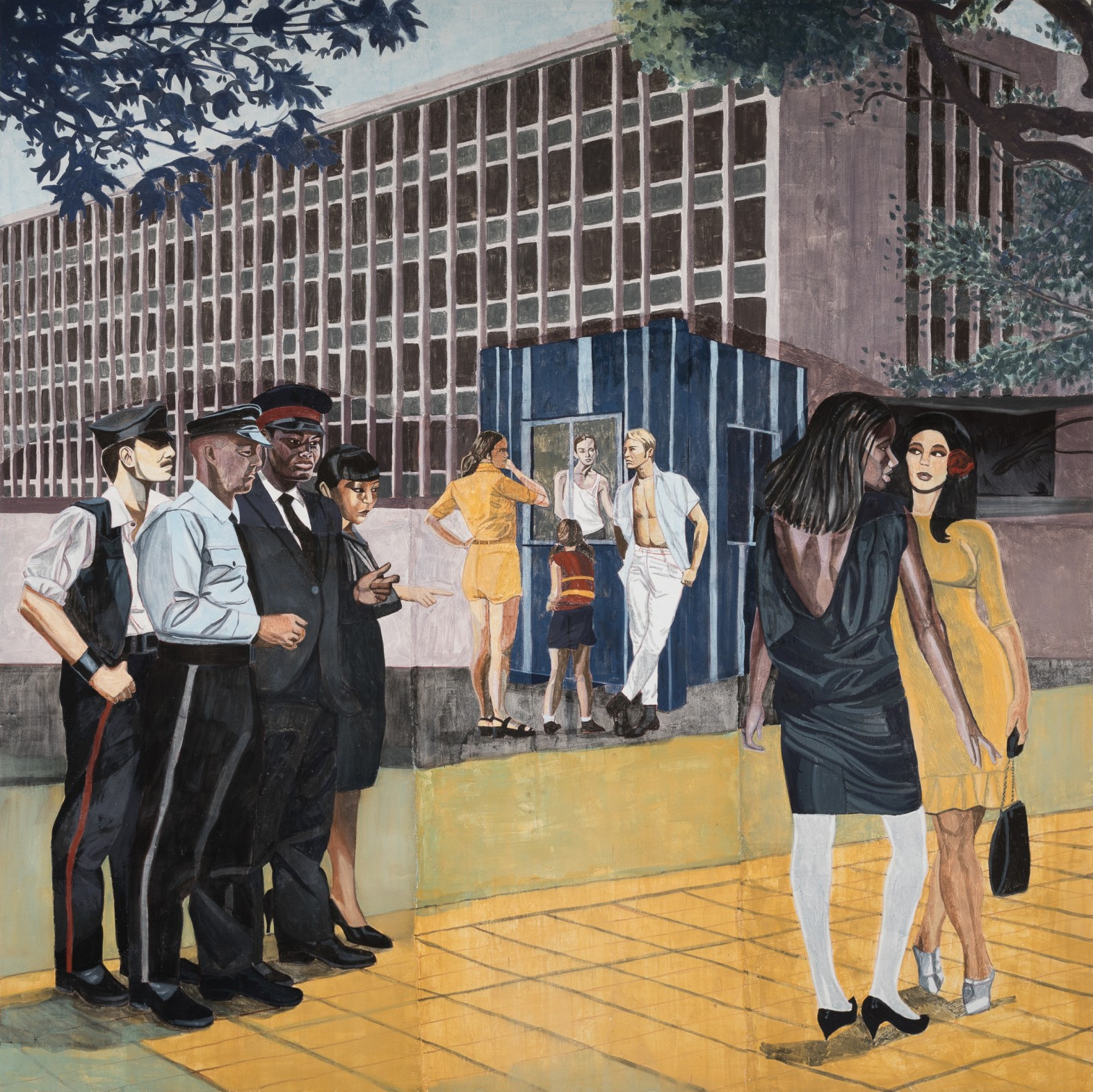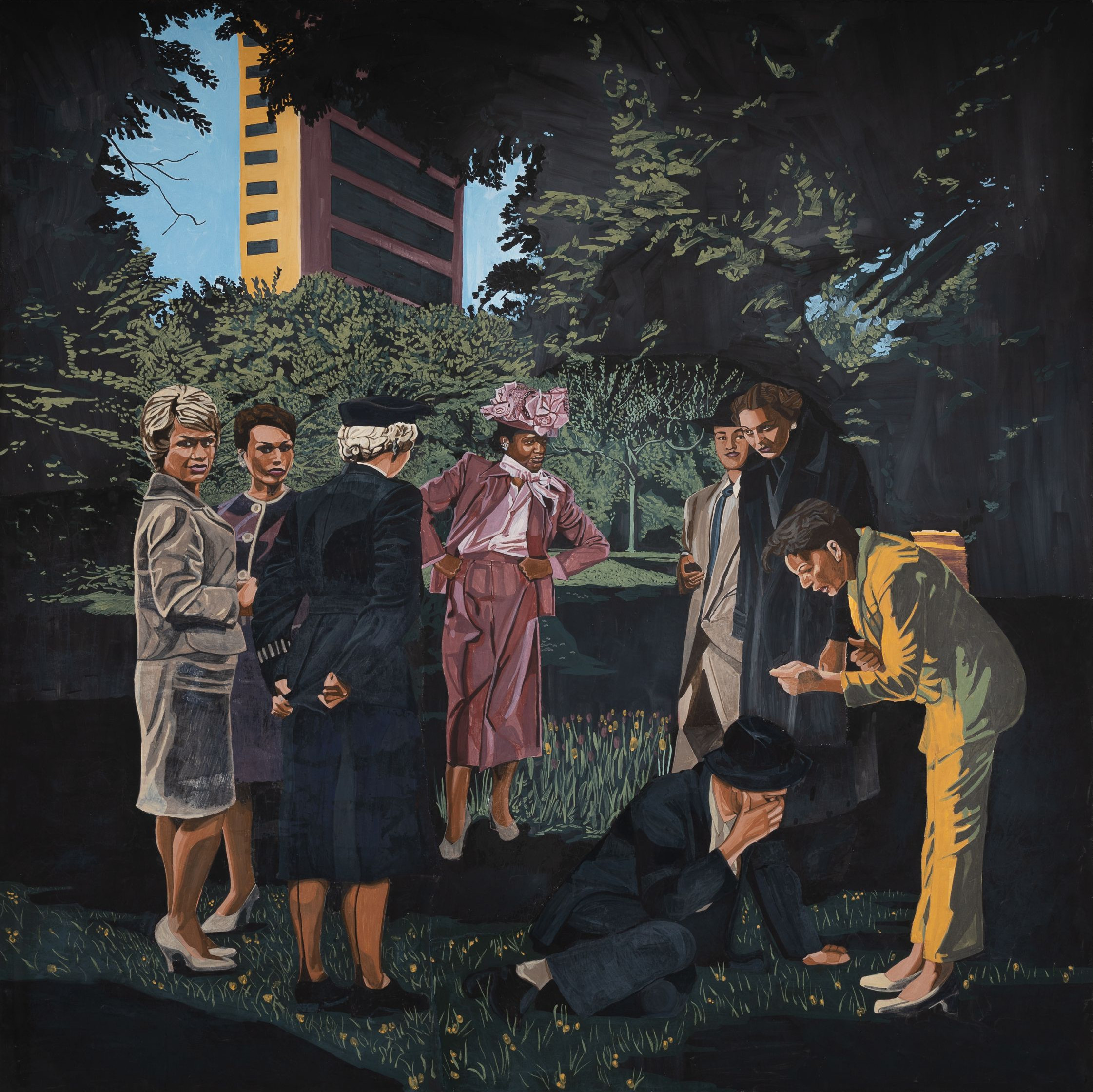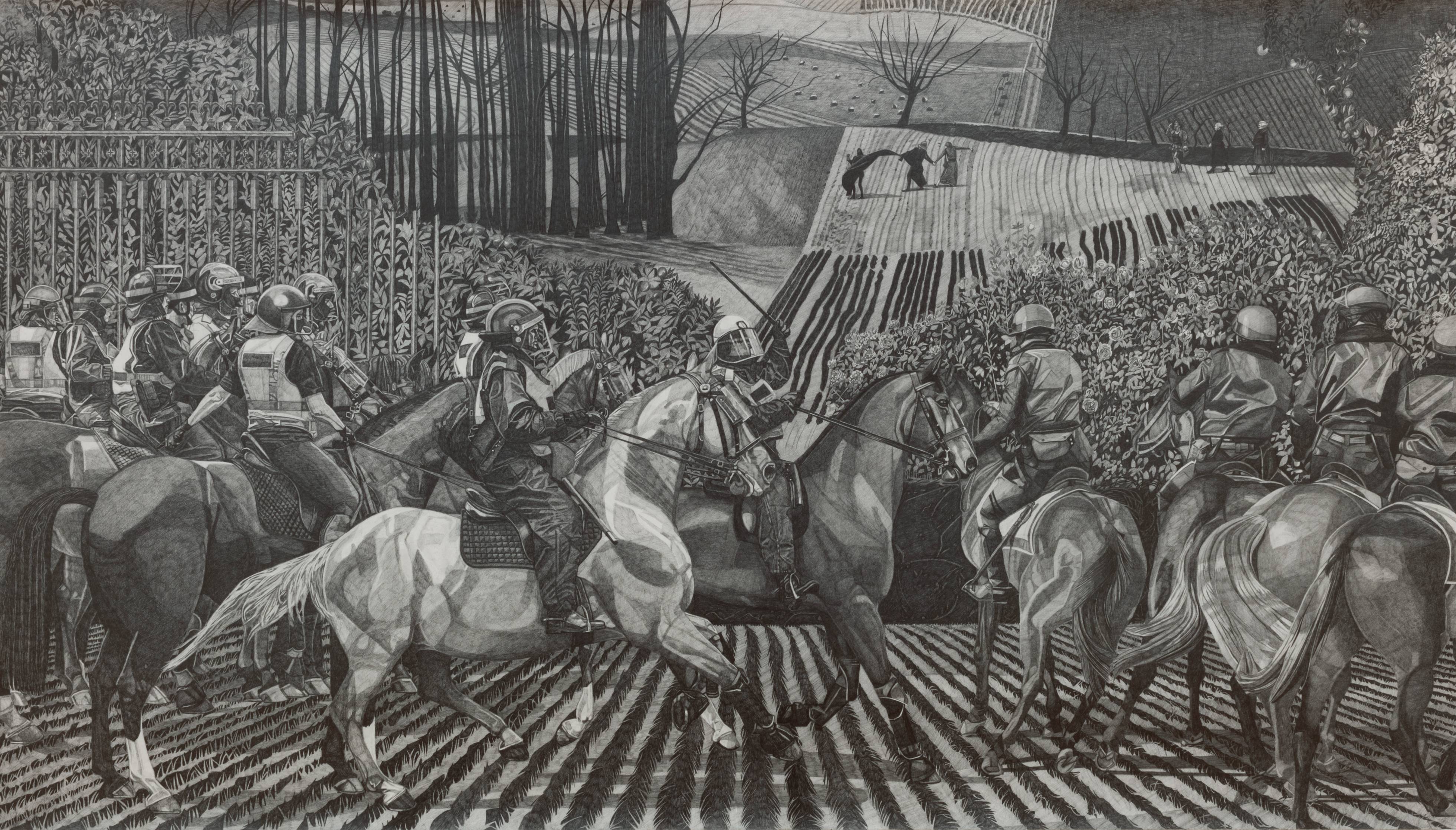Tori et Lokita (2022), the latest film by Jean-Pierre and Luc Dardenne, opens with a shot that has become a signal part of their visual repertoire: a face in the centre of the screen, crumbling under the voice of an unseen speaker. We see Lokita as she is interrogated by an immigration officer. At first, she seems impassive, but eventually she hesitates, and then breaks down in tears, unable to answer the officer’s questions. We witness the consequences of power, inscribed on a face.
Lokita is a Cameroonian from Garoua who met Tori – a resourceful Bariba child from Benin – en route to Belgium. Back home, he was denounced as a sorcerer, a claim that makes for an easier path to asylum in a West eager to believe in tales of African irrationality. Lokita, meanwhile, is forced to try to claim refugee status by pretending to be his sister. Both immigrants are in desperate circumstances, and both must work delivering drugs to pay off the debts they incurred while being trafficked to Belgium. Given the similarity of their situations, one of the basic questions posed by Tori et Lokita is why Tori should be given papers while Lokita is disbelieved. They share one life, and amid indifferent drug dealers and cold bureaucrats, it is their fictional kinship that proves the only real relationship in the film. Church and family, by contrast, are merely vessels for the extraction of capital. A Sunday service turns out to be where the traffickers who brought Tori and Lokita to Belgium take payments for their services. Lokita’s mother is interested only in the next remittance.
Fictional kinship is a motif the Dardennes have previously deployed. In Le Silence de Lorna (2008), an Albanian migrant’s sham marriage to a Belgian junky, Fabio, leads to his murder. Lorna attempts to salvage a non-transactional form of affinity from Fabio’s death by insisting that she is pregnant with the dead addict’s child: a fake pregnancy that eventually unravels her dream of owning a snack bar. All too often in the Dardennes’ films, it is attempts to find forms of solidarity – real or imagined – that lead to their characters’ downfall.
Solidarity was the focus of the Dardennes’ first works. Raised in Seraing, the Belgian city in which all their films are set, the brothers spent the early years of their career (1978-1983) making documentaries, many of which looked back to the city’s labour movement and its struggles during the 1960s, in the factories that line the banks of the river Meuse. By the 1990s, however, they had switched their attention to fiction films that assess the state of post-industrial Belgium, and memories of labour militancy are notable by their absence. In the Dardennes’ films, the factories have closed, and shuttered with them are any hopes of collective solidarity and worthwhile work.
Their oeuvre depicts a world in which everyone is struggling to survive, the conditions for solidarity are absent, and there is no moral difference between legal and illegal forms of money-making. In Tori et Lokita, we watch Tori cycle between drug deliveries made at the behest of his Albanian boss, Betim, who conducts his business from the kitchen of an Italian restaurant, where he alternates doling out cocaine and preparing caprese salads. Such under-the-counter operations are a familiar scene in the cinema of the Dardennes. There is hardly a single business that isn’t also a swindle; the hidden abode of production proves to be merely the necessary camouflage for illegal accumulation. La Promesse (1996) opens in a garage, with a young man, Igor, fixing the car of an elderly woman, who opines that ‘all work deserves payment.’ The claim evokes a world in which labour is fairly rewarded, and a moral economy could be mapped onto capitalism. Igor listens to her voice as if it emanates from another era; he has already swiped her wallet.
Other values have also been emptied out. Family is no longer a respite. The Dardennes’ films are full of fake marriages and traded babies. Domesticity is either the site of a brutal initiation into illegal business, or else simply the scene for yet another scam – as in L’Enfant (2005), in which a young man decides to sell his child to make some quick cash. Whether the family was ever meaningful, work redemptive, or solidarity possible, is unclear. Such questions belong to the prehistory of the Dardennes’ fiction films, whose characters come in two strains: those who evince no interest in anything other than playing their part in a brutal transactional economy, and those who look in vain for normative attachments. This second group is driven by the desire for normalcy: a job, a family, and a sense of a whole, ordered life. The world in which these dreams made sense is long gone, if it ever existed, but the desires remain.
It is these drives that provide much of the narrative propulsion in the Dardennes’ films, whose cameras follow their young protagonists – tracking them from behind with over-the-shoulder shots – as they search for a place in the world. Rosetta (1999) opens with the film’s eponymous heroine cannoning through a packing plant from which she has just been let go, in search of an explanation for her sacking. Her unnamed boss, le patron, tells her that there was no particular reason – it was simply cheaper to hire another trainee. Don’t take it personally, he suggests; yet all Rosetta wants is for someone to take her personally, and see that she works hard. In other films we encounter other drives. In Tori et Lokita, Tori cycles through the city to make his drug drop-offs and secure a place in Belgium. In Le Gamin au Vélo (2011), we see another child, Cyril, pedalling furiously as he searches for his deadbeat dad, possessed by the idea that they might be reunited. (His father isn’t interested.)
Despite the world’s indifference to their desires, none of these characters can rid themselves of their unattainable dreams. Rosetta tells herself: ‘I want a normal life. I want a real job.’ She hopes to escape the abject trailer park where she lives with her alcoholic mother, but it is not affluence that she craves. Early on in the film, she throws away the salmon her mother scavenges from friends in favour of fishing in a lake. Later, she refuses a job on the black market and instead tips off a patron – rarely do figures of authority receive names in the Dardennes’ films – about a scam being run by one of his employees, Rosetta’s only friend, thereby allowing her to take his job. For a fleeting moment, Rosetta seems calm, almost pacified. Finally, she has a boss and a wage: a normal life. After the factory, the film suggests, there will be neither solidarity nor meaning in work. The best one can achieve is a stunted, precarious existence: in this world, waged labour is a prize for which one is willing to risk everything.
Lokita is also set on achieving a sense of normalcy, and uses the same techniques of auto-interpellation as Rosetta. She repeats to herself: I will get my papers, find work as a caregiver, and live with Tori. This vision sustains her as she delivers drugs for Betim, and during the mock immigration interviews that Tori stages so that she can credibly appear to be his sister. It might be the case that such a dream is achievable in contemporary Belgium, but we see no evidence of this in the Dardennes’ films, which take place solely in the half-light of illegal immigration and extra-legal exploitation. The real mystery is why dreams of normality have such a hold over these characters, despite all the evidence that such reveries cannot be realized.
In Deux Jours, Une Nuit (2014), Sandra has been let go from Solwal, a solar panel manufacturing company, after her colleagues were asked to choose between a €1,000 bonus and keeping her on as an employee. After pleading with management, she is granted another vote, and given the weekend to persuade her co-workers. Sandra is obsessed with getting her job back, though she gives no indication that she enjoyed her work or did it with any pride. What makes her obsession all the more remarkable is that her conversations with colleagues reveal that few of them rely solely on their jobs at Solwal. Willy also repairs garden tiles; Hamid does a night shift stacking shelves at a convenience store. A salaried position is no longer enough to survive. Work itself is unworkable, yet Sandra cannot escape the psychic hold it has over her. The redemptive power of labour in Deux Jours, Une Nuit, of family in Le Gamin au Vélo, and of legal residency in Tori et Lokita are fantasies – convincing only from the outside, to the unemployed, the orphaned, and the undocumented. The Dardennes’ narratives unfold in the ambiguous gap between dreams of a stable life and their foreclosure in the real world.
*
In Robert Pippin’s treatment of the Dardennes’ films, he makes much of the fact that they all contain a crisis of responsibility. In La Promesse, a dying immigrant worker, Amidou, makes Igor promise to look after his wife, Assita; in Rosetta, the protagonist informs on her only friend in order to take his job, but abruptly renounces the position later in the film; and in L’Enfant, a young man sells his child and then subsequently tries to retrieve it. Some critics, such as Martin O’Shaughnessy, have claimed that the Dardenne brothers are trying to articulate an ethics after the demise of collective politics. It’s quite possible that the directors themselves would endorse such a reading. The series of journals that the Dardennes have published chronicling the making of their films, Au dos de nos images, are full of Levinas and short on Marx. (The same could be said of Sur L’Affaire Humaine, Luc Dardenne’s sole philosophical treatise).
But the films are not the filmmakers. What makes the best parts of the Dardennes’ oeuvre so compelling are the deeply uncertain ethical impulses of the characters. Igor, about to get away with covering up Amidou’s death, confesses what happened to Assita. His motivation is unclear, and seems as much to do with trying to escape his overbearing father, who is intent on initiating him into the family business of people trafficking, as it does with honouring his promise to Amidou. Ultimately, his revelation doesn’t improve Assita’s life, and destroys Igor’s world. Rosetta’s decision to give up her job is similarly complex, bound up with the return of her alcoholic mother and her own preparations for suicide. If this is what ethics looks likes after politics, it is not a redemptive story about new forms of care, but a bleak assessment of our capacity for solidarity under conditions of abjection.
Tori et Lokita is not one of the Dardennes’ finer films. Partly, this is because it functions as something of a greatest hits collection: auto-interpellation, tracking the backs of the characters, and even Tori’s manic pedalling around Seraing have all appeared in other films, to greater effect. More importantly, however, the film locates the crisis of responsibility that propels the narrative beyond the world of the characters: Lokita’s initial asylum claim is denied by the immigration officer. In desperation, she turns to Betim, who promises to supply her with false papers on the condition that she spend a month doing unspecified work for him in relative isolation. The audience fears prostitution, but instead she is taken to – of course – an abandoned factory on the outskirts of the city, where she is expected to tend to Betim’s cannabis crop. Her attachment to Tori proves her undoing. He breaks into the factory and reunites with Lokita, but things quickly go awry when Betim’s associates discover them together.
The film’s final scene is an address given by Tori at Lokita’s funeral: ‘Lokita, if you had your papers, you’d have become a caregiver, and we would have lived together in Belgium. Now, you are dead, and I am alone.’ The speech closes the circle of the film, which began with Lokita’s face as seen by an immigration officer, and ends with the consequences of that officer’s decision. Never before have the Dardennes allowed themselves to be so clearly identified with a particular perspective in their films. Tori’s address to the funeral becomes a polemic delivered to the audience, denouncing the violence meted out to immigrants and demanding a humane alternative. After screening Tori et Lokita at the London Film Festival, Luc Dardenne remarked that ‘We were indeed angry, and this anger motivated us to make this film, particularly when we found out that there’s a huge number of unaccompanied minors who disappear. No one seems to worry about it. That absolutely has to change.’
It is incontestable that the immigration policies of Europe in general and Belgium in particular are violent and racist, and there are many crusading documentaries that can and should be made about them. But what the Dardennes’ oeuvre suggests is that the situation cannot be remedied by mere policy adjustments. It’s much worse than that. In their films, papers do not bring security; they are simply another commodity to be traded in a cut-throat marketplace. The problem, the Dardennes’ films suggest, is not simply a world that cannot offer us safety, but our irredeemable desire for it. In this sense, the presiding spirit of the Dardenne brothers’ work is Lauren Berlant, who has written on La Promesse and Rosetta. Their characters are caught in what Berlant would call a state of ‘cruel optimism’, wedded to hopes and desires that post-industrial capitalism cannot deliver. Yet such is the unremitting bleakness of the Dardennes’ oeuvre that what Berlant intended as a historical diagnosis threatens to become a metaphysics: a world denuded of the possibilities of solidarity. In this world, policy reform doesn’t constitute an exit plan.
The endings of the Dardennes’ most interesting films gesture beyond this bleak vision. In La Promesse, Assita and Igor walk through a train station, not quite together but not entirely apart. We cannot sense any solidarity between the immigrant and the people trafficker – yet they keep walking. Rosetta ends with an equally silent encounter between the protagonist and the friend she ratted out to secure a job. There is no coming community in these films, but the characters have, potentially, left behind their normative attachments to impossible fantasies of the good life. There aren’t any words yet for the forms of life that follow the deaths of these dreams.
Read on: Emilie Bickerton, ‘A New Proletkino?’, NLR 109.


